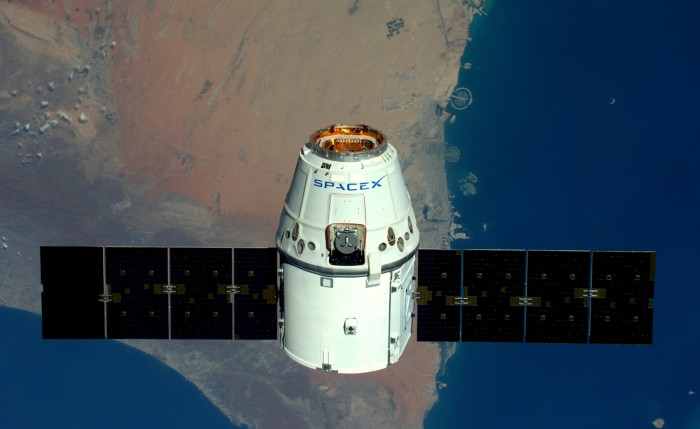SpaceX’s Plan to Provide Internet from Orbit Edges Closer to Launch
Elon Musk’s plan to beam Internet connections through the skies via satellites is a step closer to reality—but it faces stiffening competition from other technologies.
Reuters reports that SpaceX has now requested permission from the U.S. government to launch a series of small satellites into orbit that would blanket parts of the world with high-speed wireless broadband. According to the filing, the scheme would ultimately use 4,425 satellites. But SpaceX plans to start by launching 800 to provide coverage across the U.S., including Puerto Rico and the Virgin Islands.
The satellites would each measure 4 by 1.8 by 1.2 meters and weigh around 390 kilograms. Their orbits would sit somewhere between 1,150 and 1,325 kilometers above the surface of the planet.

Musk first announced the idea in early 2015. It’s backed by a number investors, including Google and Fidelity Investments, who have together put $1 billion into the project. In total, though, Musk has estimated that the entire project will cost $10 billion. Despite the huge costs to set up such a program from scratch, it demonstrably works: a startup called Outernet has rented out satellites and shown that it can beam Wikipedia, news, and other Internet content to large swaths of the world.
But SpaceX is not alone in its plans to deliver Internet from above. OneWeb and Boeing are both developing similar satellite systems. Meanwhile Facebook and Google are both pursuing lower-altitude solutions, with their Aquila and Skybender projects, not to mention stratospheric balloons, which have been gathering greater pace recently. None of the systems are up and running yet, though.
The quest for wireless Internet delivered from the sky—be it by satellite, drone, or balloon—is driven in no small part by the need to provide Internet access to poor and remote corners of the world. The resulting solution, then, better be both robust and affordable. But we’ll have to wait and see which one rises to victory.
(Read more: Reuters, The Guardian, “Meet Facebook’s Stratospheric Internet Drone,” “Why the Time Seems Right for a Space-Based Internet Service,” “Startup Beams the Web’s Most Important Content from Space, Free”)
Keep Reading
Most Popular
Large language models can do jaw-dropping things. But nobody knows exactly why.
And that's a problem. Figuring it out is one of the biggest scientific puzzles of our time and a crucial step towards controlling more powerful future models.
How scientists traced a mysterious covid case back to six toilets
When wastewater surveillance turns into a hunt for a single infected individual, the ethics get tricky.
The problem with plug-in hybrids? Their drivers.
Plug-in hybrids are often sold as a transition to EVs, but new data from Europe shows we’re still underestimating the emissions they produce.
Stay connected
Get the latest updates from
MIT Technology Review
Discover special offers, top stories, upcoming events, and more.